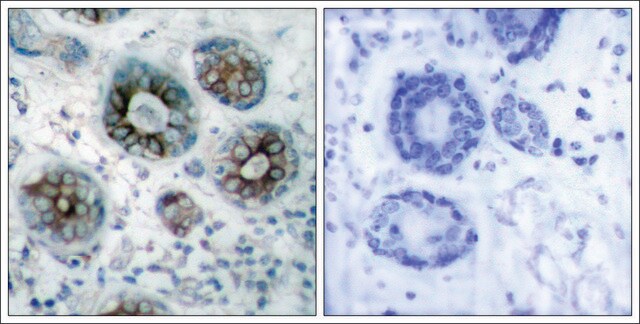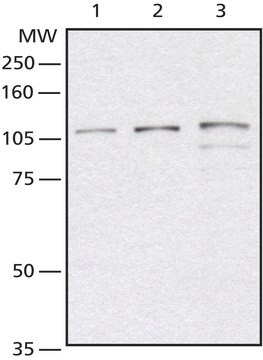05-1076
Anti-c-Jun Antibody, clone 6E4.4
clone 6E4.4, from mouse
Synonym(s):
JNK1 alpha protein kinase, JNK1 beta protein kinase, JUN N-terminal kinase, Stress-activated protein kinase JNK1, c-Jun N-terminal kinase 1, mitogen-activated protein kinase 8, mitogen-activated protein kinase 8 isoform JNK1 alpha1, mitogen-activated pro
About This Item
Recommended Products
biological source
mouse
Quality Level
antibody form
purified immunoglobulin
antibody product type
primary antibodies
clone
6E4.4, monoclonal
species reactivity
mouse, human, rat
packaging
antibody small pack of 25 μg
technique(s)
immunocytochemistry: suitable
western blot: suitable
isotype
IgG1κ
NCBI accession no.
UniProt accession no.
shipped in
ambient
target post-translational modification
unmodified
Gene Information
human ... JUN(3725)
mouse ... Jun(16476)
rat ... Jun(24516)
General description
Specificity
Immunogen
Application
Epigenetics & Nuclear Function
Transcription Factors
Immunocytochemistry Analysis: Confocal fluorescent analysis of HeLa, C2C12, and A431 cells using anti-c-Jun, clone 6E4.4 mouse monoclonal antibody (see page 2).
Quality
Western Blot Analysis: 0.5-2 µg/mL of this antibody detected c-Jun on 15 µg of NIH/3T3 cell lysate.
Target description
Multiple bands may be visible, indicating various phosphorylation states.
Linkage
Physical form
Storage and Stability
Analysis Note
NIH/3T3 cell lysate
Other Notes
Disclaimer
Not finding the right product?
Try our Product Selector Tool.
Storage Class Code
12 - Non Combustible Liquids
WGK
WGK 1
Flash Point(F)
Not applicable
Flash Point(C)
Not applicable
Certificates of Analysis (COA)
Search for Certificates of Analysis (COA) by entering the products Lot/Batch Number. Lot and Batch Numbers can be found on a product’s label following the words ‘Lot’ or ‘Batch’.
Already Own This Product?
Find documentation for the products that you have recently purchased in the Document Library.
Our team of scientists has experience in all areas of research including Life Science, Material Science, Chemical Synthesis, Chromatography, Analytical and many others.
Contact Technical Service








